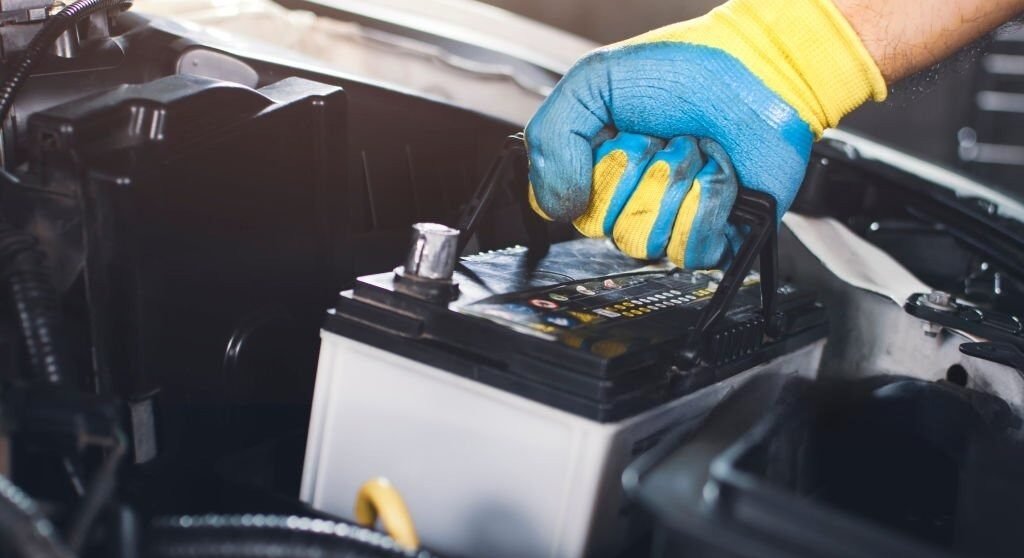When it comes to car batteries, most drivers don’t pay much attention until their vehicle refuses to start. However, not all car batteries are created equal. Among the various options available, the Absorbent Glass Mat (AGM) battery stands out as a superior choice for modern vehicles. Known for its durability, efficiency, and maintenance-free operation, an AGM battery is a reliable powerhouse that keeps your car running smoothly.
What Is an AGM Battery?
An AGM battery is a type of lead-acid battery that uses a fiberglass mat to absorb the electrolyte solution. Unlike conventional flooded batteries, AGM batteries are completely sealed, making them spill-proof and maintenance-free. This advanced design allows for better performance, longer lifespan, and improved safety.
How AGM Batteries Work
AGM batteries utilize a unique construction where the electrolyte is suspended in absorbent glass mats rather than freely flowing. This design provides several benefits, including:
- Higher power output for strong engine starts
- Faster recharge rates compared to traditional batteries
- Enhanced durability due to resistance to vibrations
- No liquid leakage, making them safer for vehicle use
Why Should You Choose an AGM Battery for Your Car?
AGM batteries have become increasingly popular in modern vehicles, especially those with advanced electrical systems. Here’s why they are a better choice than standard lead-acid batteries.
1. Exceptional Performance in Extreme Conditions
AGM batteries perform reliably in both extreme heat and cold. Unlike traditional batteries, they do not lose efficiency quickly in freezing temperatures, making them ideal for drivers in harsh climates.
2. Longer Lifespan and Better Reliability
A typical lead-acid battery lasts 3 to 5 years, while an AGM battery can last 5 to 7 years with proper care. This extended lifespan makes AGM batteries a cost-effective choice in the long run.
3. Maintenance-Free Operation
Since AGM batteries are sealed, they do not require water refilling or regular maintenance. This makes them a hassle-free option for car owners who prefer a set-and-forget solution.
4. Ideal for Modern Vehicles with High Electrical Demands
Many modern cars come equipped with start-stop technology, advanced infotainment systems, and multiple electronic components. AGM batteries provide the stable power supply needed to support these features without frequent failures.
5. Safer and More Environmentally Friendly
AGM batteries are spill-proof and leak-proof, reducing the risk of acid spills and corrosion. They are also more eco-friendly since they produce fewer harmful emissions compared to traditional batteries.
AGM Battery vs. Traditional Lead-Acid Battery
To understand why AGM batteries are superior, let’s compare them with conventional lead-acid batteries.
Durability and Lifespan
- AGM Battery: Lasts 5-7 years with proper maintenance
- Lead-Acid Battery: Typically lasts 3-5 years
Maintenance Requirements
- AGM Battery: Completely maintenance-free
- Lead-Acid Battery: Requires periodic water refilling
Vibration and Shock Resistance
- AGM Battery: Highly resistant to vibrations, making it ideal for rough terrains
- Lead-Acid Battery: More prone to damage from shocks and vibrations
Charging Efficiency
- AGM Battery: Charges faster and holds charge longer
- Lead-Acid Battery: Slower charging and higher self-discharge rate
Cost Comparison
- AGM Battery: Higher initial cost but better long-term value
- Lead-Acid Battery: Cheaper upfront but may require frequent replacements
How to Maintain an AGM Battery for Maximum Performance
While AGM batteries are low-maintenance, following a few best practices can help extend their lifespan.
1. Keep the Battery Fully Charged
AGM batteries perform best when kept at full charge. If your car is unused for long periods, consider using a smart battery charger to maintain optimal charge levels.
2. Avoid Deep Discharges
Frequently draining the battery below 50% can shorten its lifespan. If your car has high power demands, monitor the battery voltage regularly.
3. Clean Battery Terminals Periodically
Corrosion on battery terminals can reduce efficiency. Clean them with a mixture of baking soda and water to ensure a strong electrical connection.
4. Use an AGM-Compatible Charger
Not all battery chargers are suitable for AGM batteries. Always use a charger designed specifically for AGM technology to prevent damage.
Signs That Your AGM Battery Needs Replacement
Even the best batteries wear out over time. Here are some common indicators that your AGM battery may need replacement.
1. Slow or Weak Engine Cranking
If your engine takes longer to start or struggles to turn over, the battery may be losing its charge-holding capacity.
2. Frequent Jump-Starts Required
Needing jump-starts regularly is a clear sign that the battery is no longer holding a charge effectively.
3. Swollen or Bloated Battery Case
Physical damage or excessive heat can cause the battery case to swell, indicating internal failure.
4. Dashboard Battery Warning Light
Many modern cars have a battery warning light that illuminates when the charging system is faulty.
Final Thoughts
An AGM battery in your car is a smart investment for anyone looking for reliability, longevity, and superior performance. Whether you drive a high-tech vehicle with advanced electronics or simply want a durable battery that requires minimal upkeep, AGM technology delivers unmatched benefits. By following proper maintenance practices, you can maximize its lifespan and enjoy a trouble-free driving experience for years to come.








